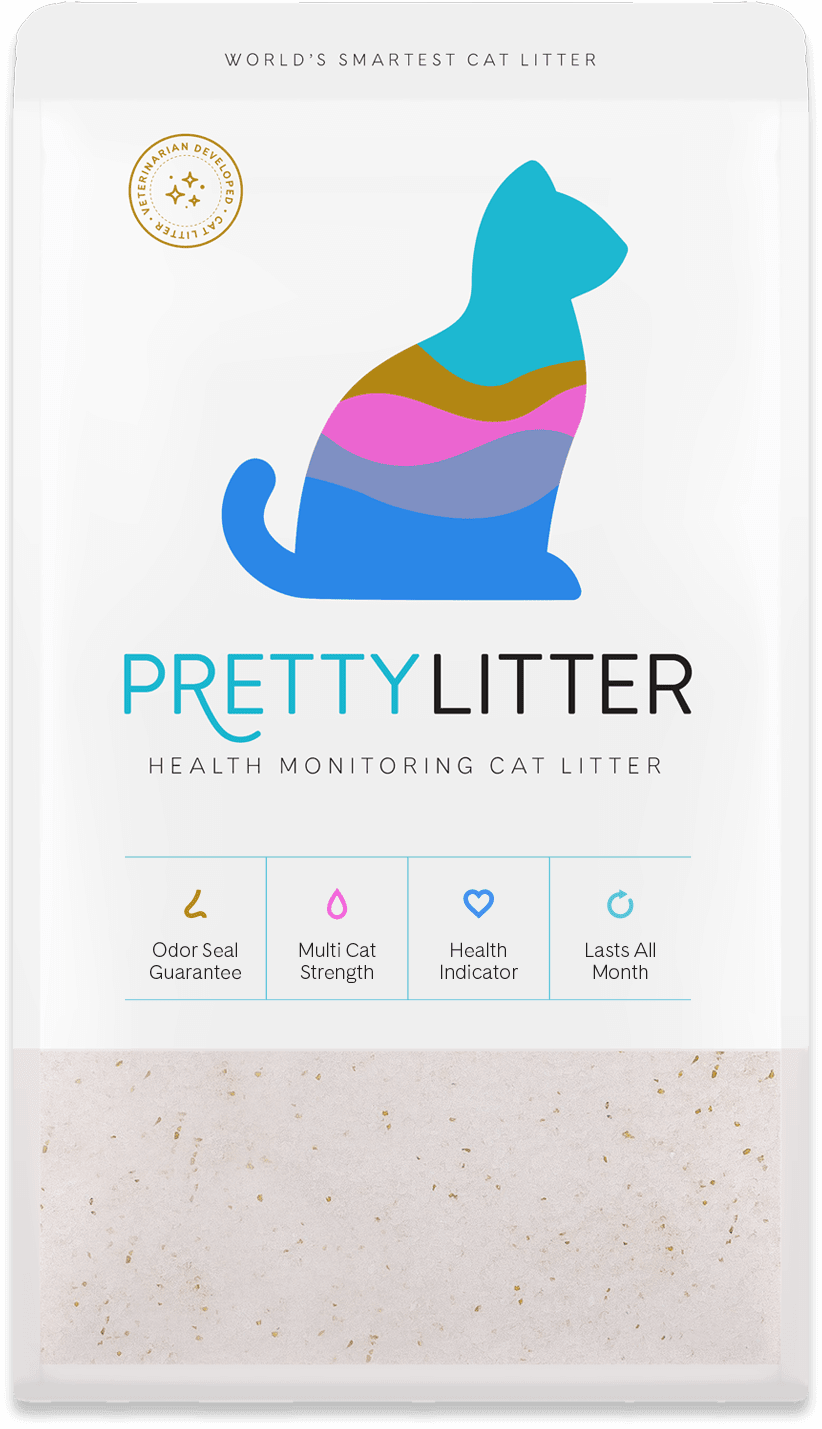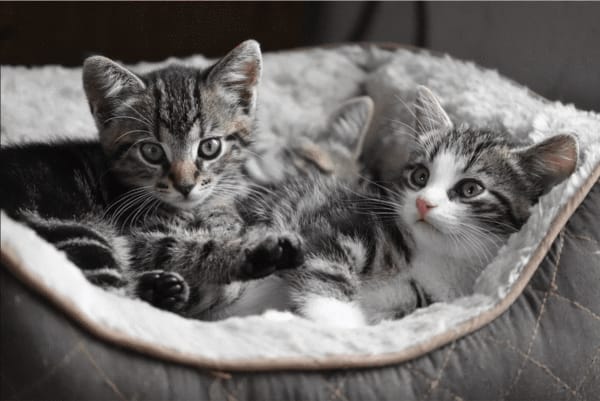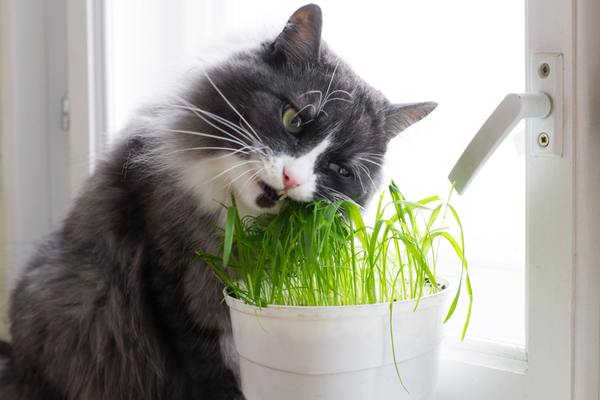June 7, 2025 |7 min read
Can Cats Have ADHD? Understanding Hyperactive Feline Behavior

Written by

Cat behavior is known for being quirky: One minute, they're lounging like royalty, the next, they're sprinting full speed across the house like they're training for the feline Olympics. If you've ever wondered, "Can cats have ADHD?” We can help you answer that question.
Can Cats Have ADHD?
While cats can act a little “extra” from time to time, there’s no clinical diagnosis for ADHD in cats like there is in humans. Attention-Deficit/Hyperactivity Disorder is a neurodevelopmental condition specific to people, but that doesn’t mean your cat’s wild bursts of energy or ultra-short attention span don’t feel suspiciously similar to symptoms in children who are diagnosed with ADHD.
The signs of ADHD in humans, both in children and adults, often include distracted behavior, impulsivity, and inattention, and some pet owners might see parallels with their feline friends. Unlike dogs who can be diagnosed with canine hyperkinesis (which is similar to human ADHD), there is not enough research to support that cats can have the same disorder, but the traits that make us ask that question are worth understanding.
When people talk about ADHD in cats, they’re usually referring to a specific set of behaviors: zooming through rooms, swatting at invisible enemies, jumping from shelf to shelf like a furry acrobat, and flipping between nap mode and chaos mode in mere seconds. These behaviors don’t mean there’s anything wrong. Cats are just wired a little differently than we are. Their instincts still mirror those of their wild ancestors: hunting, stalking, chasing, and playing, sometimes all at once.
So while cats and ADHD don't have a scientific connection, the similarities in behavior can help us get a better read on our feline friends and give them the enrichment and structure they need to thrive.
Cat Litter That Prioritizes Their
Health & Your Happiness.
to get your first bag for only $14.99
Common Signs of Hyperactivity in Cats
You know the signs: the sudden 3 a.m. zoomies, knocking over your favorite candle mid-air twist, or meowing with the dramatic flair of a Broadway star. Some cats simply have more energy to burn, and it shows up in entertaining, albeit chaotic, ways. Here are a few signs your cat might be on the more enthusiastic end of the energy spectrum:
- Zoomies: Those sudden sprints across the house aren’t just for show. Cats experience zoomies, or these bursts of activity (often at night), as part of their natural play-hunt-sleep cycle.
- Short attention span: One moment they’re all about that feather wand; the next, they’re laser-focused on a ball of dust or something shiny.
- Restlessness: Your cat may seem bored, pace a lot, or constantly get into things they shouldn’t.
- Excessive vocalization: Some high-energy cats become little chatterboxes, especially when they're under-stimulated.
- Over-the-top play: Biting, pouncing, and bunny-kicking are normal, but if your cat’s play crosses into too-rough territory or happens all day, it could be a sign of excess energy.
It’s important to note that playful doesn’t mean problematic. But when these behaviors become disruptive or your cat seems unable to settle down, it’s worth exploring some lifestyle tweaks. Consulting with a veterinarian can also be helpful in understanding if these behaviors are linked to other medical conditions or causes.
How to Support a High-Energy Cat at Home
If your cat seems to run on a mysterious internal espresso machine, remember that you’re not powerless in this situation. The key to managing that boundless energy isn’t trying to “calm them down,” but rather giving them an outlet that feels fun, engaging, and natural. Plus, you can bond with your cat in the process.
Build in Daily Enrichment Routines
Cats are both cute and clever, but clever cats get bored fast. Incorporating intentional playtime can redirect chaotic bursts into healthy, structured activity. Try scheduling 10–15 minutes of interactive play in the morning and evening to help release pent-up energy while keeping your cat fit and healthy. Your cats can play with wand toys, interactive puzzles, or even a cardboard box obstacle course.
Don’t underestimate the power of vertical space, either. Cat trees, window perches, and shelves that they’re allowed to climb give your high-energy feline a “safe zone” to burn off steam. These spaces also give them control, which is something cats crave.
Create a Predictable Routine
Routines help cats feel secure. Feeding, playing, and even litter box care should happen on a fairly consistent schedule. Predictability gives your cat something to look forward to, which can ease restlessness and reduce the need for attention-seeking behavior. For example, if your kitty tends to get the zoomies every night, consider a structured play session followed by dinner. The play mimics the hunt, and the meal rewards that effort.
Litter Box Peace of Mind
A hyper cat might seem 100% healthy on the outside, but how do you know what’s really going on inside? That’s where PrettyLitter shines. Beyond making litter box cleanup incredibly low-maintenance, it helps monitor your cat’s health by changing color when something might be off. So, even if your cat’s bouncing off the walls, PrettyLitter keeps you grounded with real insights. It helps you keep tabs on your cat’s well-being without adding any extra chaos to your life.

Helpful Resources for Curious Cat Parents
Life with a high-energy cat can feel like raising a tiny, whiskered whirlwind—but you’re not alone. At PrettyLitter, we’re here to help you understand your cat’s quirks, zoomies, and everything in between.
Our blog is packed with helpful tips on feline behavior, health insights, and enrichment ideas – from decoding body language to building play routines.
So, can cats have ADHD? Not quite—but we get why some feel that way. With the right tools, structure, and a little help from PrettyLitter, even the most spirited feline can thrive.
Whether your cat is a midnight sprinter or a professional napper, PrettyLitter helps keep things simple. Because when your cat’s litter tells you what they can’t, you’re already one step ahead.
Sources:
- Cats. Can Cats Have ADHD? 6 Signs To Watch Out For. https://cats.com/can-cats-have-adhd
- Sachs Center. Can Cats and Dogs Have Autism and ADHD? https://sachscenter.com/can-cats-dogs-have-autism-adhd/
- Connect n Care. Decoding Feline ADHD: Essential Insights for Cat Owners. https://www.connectncareaba.com/blog/decoding-feline-adhd







